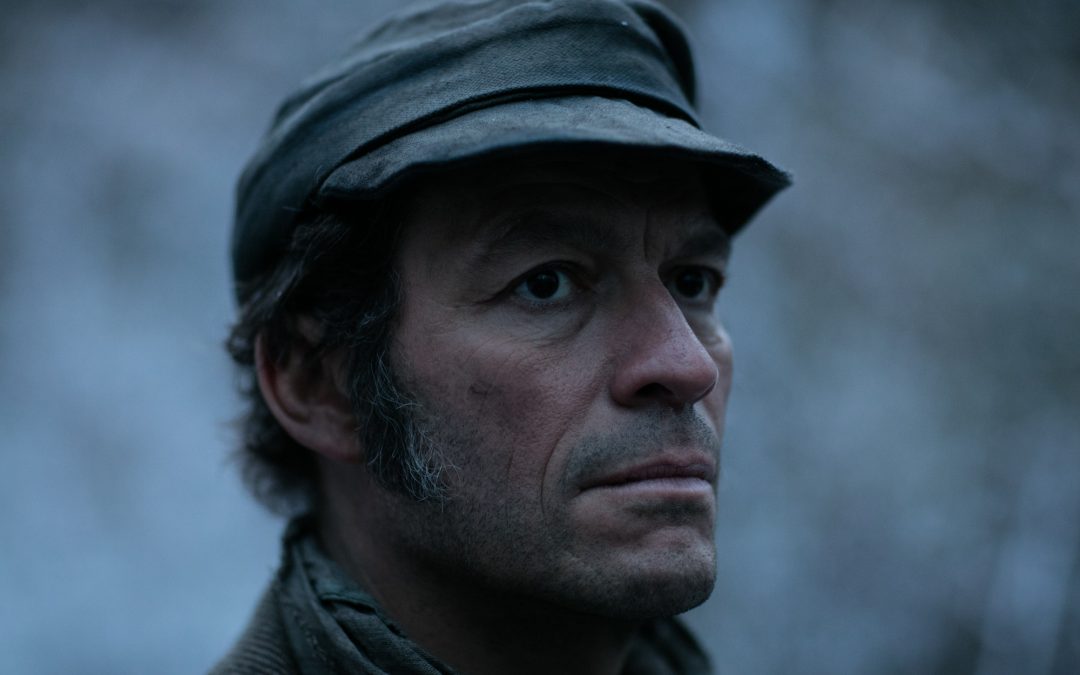This review contains spoilers.
People don’t come out of Les Miserables well. There’s the odd hero (Bishop Myriel, Sister Simplice, Dominic West’s swimming pool eyes), but en masse, it shows us to be an ugly lot. Boo-hissing at desperate cases in the courtroom or cackling over a child being whipped at the inn, the people of Les Miserables are cruel mobs with hard hearts. The innocent are hounded and their good intentions are beset by busybodies and fanatics.
So much of Les Miserables’ suffering is needless. Had the “principal tenant” of Valjean and Cosette’s building left well enough alone, the pair could have lived a good life carrying each other’s buckets without fear of discovery. Had Madame Victurnien followed orders, and kept her sticky beak out of Fantine’s business, the poor girl might have expired in a warm bed surrounded by fat grandchildren instead of in the cold infirmary, surrounded by nuns in entertainingly improbable headgear.
But then, if Madame Victurnien didn’t get Fantine, then the Thenardiers would have. Or someone else. Cruelty abounds in Les Miserables. If it didn’t, there’d be need of a new title. Les Fine Thanks. Les Mustn’t Grumbles.
If it all paints a depressing picture of humankind as a field of stinking manure where a few lone roses grow among the overwhelming stench, then it’s at least in service of a goal. These stories are parables designed to make us despise pettiness and treasure compassion. Frustrating as the arbitrary spite and lack of fellow-feeling are to watch, it’s all in aid of our moral improvement.
The didacticism would be harder to stomach if it weren’t accompanied by such a rollicking and enjoyably unlikely plot. There’s almost as much bonkers contrivance in Les Miserables’ storylines as there is cruelty: the Parisian convent where Cosette is taken in contains the very same sister who nursed her dying mother years before! The travelling fair that visits Montfermeil is the very same at which Fantine sold her hair and teeth in Montreuil! A doll, chosen by a kind stranger for a poor little girl – we imagine – was made using the little girl’s own dead mother’s hair!
That last one gave episode three an eerie tinge. Thanks to horror movies, china dolls are sinister enough objects without being haunted by dead mum follicles. After all those years of traumatising abuse at the hands of Mme Thenardier, there’s every chance that little Cosette really did hear a voice whispering out from that unmoving face – a voice telling her to kill. Ready yourself for Les Miserables 2: Catherine’s Revenge.
Catherine the doll wasn’t the only spectre haunting Valjean and Cosette’s scenes – there was also the uncharitable suspicion from all quarters that instead of being her kindly benefactor, Valjean was in fact, a child abuser. That the Thenardiers suspected exactly that but allowed Valjean to take the girl anyway shows what monsters they are, as if any more proof were needed.
Les Miserables’ belief in the role of nurture over nature gets wobbly when it comes to villains like the Thenardiers. Episode one showed us Valjean corrupted by unjust treatment and then rehabilitated through kindness as an answer to Javert’s devotion to the concept of unshifting criminal mentality. There’s no sense that a route back to morality could be found for this drama’s villains. Neither is any explanation offered as to how the Thenardiers became such a horror show.
Unlike West’s layered and affecting portrayal of Valjean, this adaptation’s Javert is so far another one-note villain. Gruff and scowling, making a face like there’s a bad smell permanently under his nose (which, in nineteenth-century Paris, there likely is), Javert’s obsession with rooting out “the scum of the Earth” and destroying Valjean’s life feels frustratingly needless. Always the way with a fanatic.
Javert’s pursuit of Valjean through the streets of Paris took episode three from the horror to the action genre. Fashioning a makeshift carabiner and pulley system, Valjean pulled off a thrilling Mission Impossible-style disappearing trick. Add that to the off-screen faked drowning and his swift dispatch of the grasping “hero of Waterloo”, and the man’s the original action hero.
He’s Cosette’s hero at least, even if he didn’t suceed in being her poor mother’s.
Read Louisa’s review of the previous episode here.

